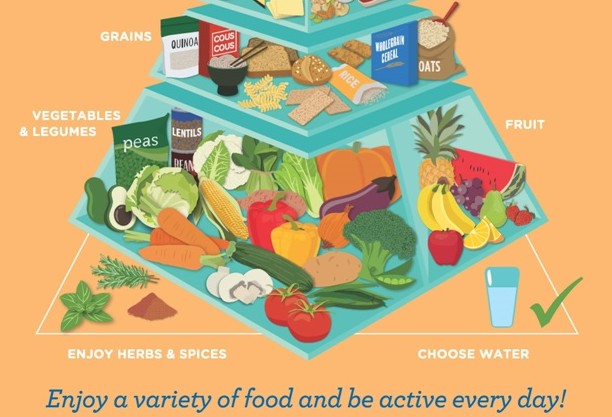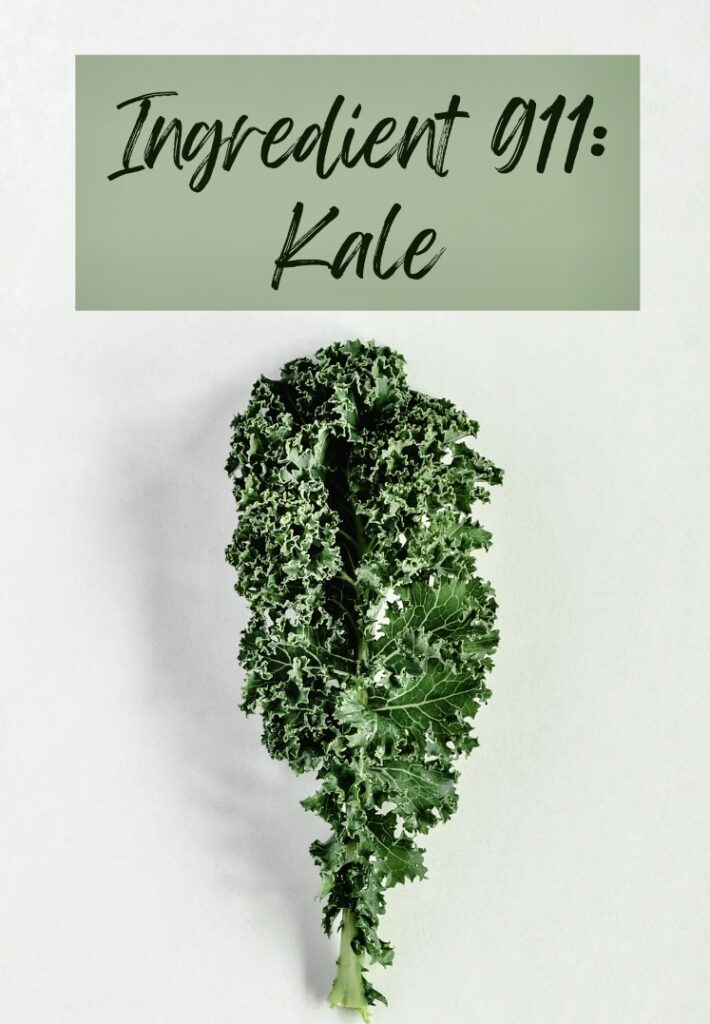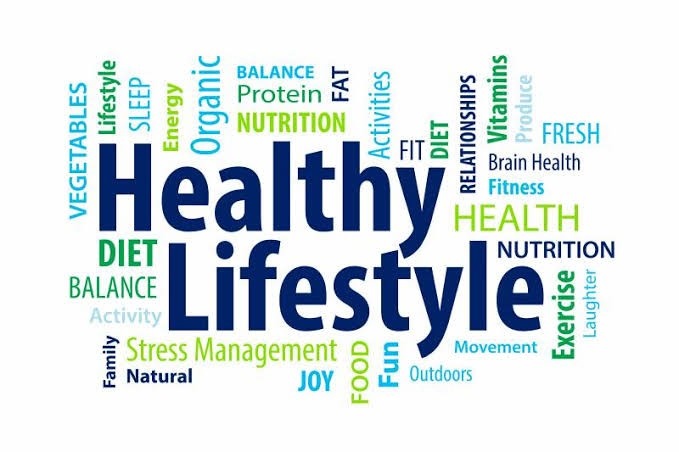
It is possible to live a healthy lifestyle. Healthy living is defined by healthy habits and smart choices. According to American Heritage Dictionary, healthy living refers to an individual's attitude, values, as well as practices, that aim at improving their physical, mental, social and emotional well-being. Healthy lifestyles include eating healthy, exercising, and getting enough rest. The overall outlook of a person's life reflects their outlook. People who live a healthy lifestyle are in good health.
You can make small changes to your daily routine to be healthy. It could be as simple as moving more, adding fruits to your cereal, drinking less water, or refusing another serving of potatoes. Although many people are aware they need to exercise more, they may find numerous excuses to not do so. It may be because they're busy or feel they don't have enough time to exercise. Even though we all know it's important to get more exercise, we sometimes find excuses not to.

Your overall health and well-being depends on how healthy your body is. Not only does healthy eating improve your physical health, but it also improves your mental and emotional health. Exercising regularly can help reduce stress. You will live longer if you exercise on a regular basis. Not only will you feel better physically, but also mentally. A healthy diet is essential for overall health, including your weight. American Heart Association recommends you consume 5 portions of fruits and veggies per day. In addition, you should be eating more whole grains.
Ultimately, a healthy lifestyle is the sum of decisions you make every day that affect your physical health. A balanced lifestyle is one that includes laughter, happiness and plenty of fun. Not only is it important to reduce unhealthy habits but also to have a positive outlook. For wellness, it is important to live a balanced lifestyle. So, what are you waiting? You can make small changes to improve your health and be on your way towards a happier you. If you are looking to feel happier & more vibrant, this is the right place for you!
You can help others by eating healthy food and taking good care of yourself. Maintain a positive outlook. This will be a big help in your health. A healthy lifestyle is a happy life. A healthy body means a happy mind. These five habits will help you live a healthy life and avoid diseases. Your stress level is also an important factor. It's important to control your stress levels for your overall health.

Active lifestyles include regular exercise. Regular physical activity can help you lose weight, improve mood, and keep your body active. Regular physical activity and a healthy diet can help prevent heart attacks and keep you feeling good. Healthy lifestyles will allow you to wear your favorite jeans again. You'll feel happier and more energetic if you are able to make these lifestyle changes. It is important to make healthy decisions in order to live a healthy and happy life.
FAQ
What is the best food for me?
Your age, gender, body type, and lifestyle choices will all impact the best diet. Consider how much energy and low-calorie foods you consume, as well as whether or not you are a fan of fruits and vegetables.
Intermittent fasting might be an option for you if your goal is to lose weight. Intermittent fasting allows you to consume only certain meals per day, instead of eating three large meals. This approach may prove to be more beneficial than traditional diets that have daily calorie counts.
Research suggests that intermittent fasting may increase insulin sensitivity and lower inflammation. This can result in a reduction in blood sugar levels and a reduced risk of developing diabetes. Research also shows that intermittent fasting may increase fat loss and improve overall physique.
What should I eat?
Get lots of fruits & vegetables. They provide vitamins and minerals to keep your immune system strong. Additionally, vegetables and fruits are high fiber. This helps with digestion and keeps them full. Try to include at least five servings of fruit and veg per day.
Get plenty of water. Water flushes toxins from your body and helps you feel full between meals. Drink about eight glasses each day.
Choose whole grains over refined grains. Whole grains have all the nutrients they need, including B vitamins. Refined grains have been stripped of some of their nutrition.
Avoid sugary beverages. Sugary drinks can be a source of empty calories, which can lead to obesity. Instead, drink water, milk, or unsweetened Tea.
Avoid fast food. Fast food lacks nutritional value. Fast food may be delicious, but it will not give you the energy that you need to perform your tasks properly. Use healthier options, such as soups, sandwiches, salads, and pasta.
Reduce your alcohol intake. Alcohol contains empty calories and contributes to poor nutrition. Limit the number of alcoholic beverages you consume per week to no more that two.
Try to cut down on red meat. Red meats are high-in saturated fat and cholesterol. Lean cuts of beef or pork, lamb and chicken, as well as fish, are better choices.
Are there 5 ways to have a healthy lifestyle?
A healthy lifestyle means eating right, being active, getting enough sleep, managing your stress levels, and having fun. Eating well means avoiding processed foods, sugar, and unhealthy fats. Exercise can help you burn calories and strengthen your muscles. You can improve your memory and concentration by getting enough sleep. Stress management reduces anxiety, depression and other symptoms. Fun is the key to keeping us healthy and happy.
How to measure body weight?
The best way to measure body fat is with a Body Fat Analyzer. These devices measure the body fat percentage in people who wish to lose weight.
Do I have to count calories?
Perhaps you are wondering what the best diet is for you. or "is counting calories necessary?" It depends on many factors such as your current health, personal goals, preferences, and overall lifestyle.
The Best Diet For Me - Which One Is Right For You?
My personal health, goals and preferences as well as my lifestyle determine which diet is best for me. There are many diets available, some good and others not so good. Some diets work for some people, while others are not. So what should I do? How do I make a good decision?
These are the questions this article will answer. It starts with a brief introduction of the different types of diets available today. Next, we'll discuss the pros and cons for each type of diet. Finally, we'll look into how to choose the best one for you.
Let's look at some of the main types of diets to get started.
Diet Types
There are three main types, low fat, high protein, or ketogenic diets. Let's look at each one briefly.
Low Fat Diets
A low-fat diet is one that limits the intake of fats. This is done through reducing the intake of saturated fats (butter, cream cheese, etc.) and replacing them with unsaturated fats (olive oil, avocados, etc.). If you want to lose weight fast and easily, then a low fat diet is often recommended. However, this kind of diet may cause problems such as constipation, heartburn, and indigestion. A person may also experience vitamin deficiencies if they don't get enough vitamins.
High Protein Diets
High protein diets reduce carbohydrates to favor of proteins. These diets often have higher levels of protein than most other diets. These diets can help increase muscle mass and decrease calories. However, they might not provide enough nutrition for those who need to eat frequently. Also, they tend to be very restrictive, so they aren't suitable for everyone.
Ketogenic Diets
Also known as keto diets, ketogenic diets are also called keto diets. They are high in fat, moderately high in protein and low in carbohydrates. Athletes and bodybuilders use them because they allow them more time and harder training without feeling fatigued. You must adhere to all side effects, including fatigue, headaches, nausea and headaches.
What is the difference in calorie and kilocalories?
Calories measure the energy content of food. The unit of measurement is called a calorie. One calorie is the amount of energy required to heat one gram water one degree Celsius.
Kilocalories refer to calories in another term. Kilocalories can be measured in thousandsths of one calorie. For example, 1000 calories equals one kilocalorie.
Improve immunity with herbs and supplements?
It is possible to boost immune function by using herbs and natural remedies. There are many natural remedies that can boost immunity, including echinacea (oregano), ginger, ginkgo biloba and vitamin C.
These herbal remedies should not be used in place of conventional medical treatment. Side effects include nausea, diarrhea and stomach cramps, headaches and dizziness.
Statistics
- According to the 2020 Dietary Guidelines for Americans, a balanced diet high in fruits and vegetables, lean protein, low-fat dairy and whole grains is needed for optimal energy. (mayoclinichealthsystem.org)
- According to the Physical Activity Guidelines for Americans, we should strive for at least 150 minutes of moderate intensity activity each week (54Trusted Source Smoking, harmful use of drugs, and alcohol abuse can all seriously negatively affect your health. (healthline.com)
- In both adults and children, the intake of free sugars should be reduced to less than 10% of total energy intake. (who.int)
- nutrients.[17]X Research sourceWhole grains to try include: 100% whole wheat pasta and bread, brown rice, whole grain oats, farro, millet, quinoa, and barley. (wikihow.com)
External Links
How To
What does the word "vitamin" mean?
Vitamins are organic compounds found naturally in food. Vitamins are necessary for us to absorb nutrients in the foods we consume. Vitamins cannot be made by the body; they must be taken from food.
There are two types: water-soluble and fat-soluble vitamins. Water-soluble vitamins dissolve quickly in water. Some examples include vitamin C,B1 and B2 vitamins (thiamine), B2 and riboflavin, B3 and B6 vitamins (niacin), folic acids, biotin, pantothenic acids, and cholesterol. The liver and fat soluble vitamins are stored within the liver and in fatty tissue. Vitamin D, E, K and A are some examples.
Vitamins are classified according to their biological activity. There are eight major groups of vitamins:
-
A - Vital for normal growth and maintaining good health.
-
C - important for proper nerve function and energy production.
-
D - Vital for healthy bones and teeth
-
E is needed for good reproduction and vision.
-
K - Required for healthy nerves and muscles.
-
P - essential for strong bones, teeth and tendons
-
Q - Aids digestion and iron absorption
-
R – Required for the formation of red blood vessels.
The recommended daily allowance (RDA), for vitamins, varies depending upon age, gender, or physical condition. The U.S. Food and Drug Administration, (FDA), sets the RDA value.
For example, the RDA for vitamin A is 400 micrograms per dayfor adults 19 years or older. Pregnant women require 600 micrograms daily to support fetal development. Children ages 1-8 require 900 micrograms per day. Infants under one year of age require 700 micrograms per day, but this amount decreases to 500 micrograms per day between 9 months and 12 months of age.
Children aged 1-18 years need 800 micrograms daily, while children overweight require 1000 micrograms per days. Children who are severely obese or underweight will need 1200 micrograms each day.
Children 4-8 years old who have anemia must consume 2200 micrograms of Vitamin C daily.
2000 micrograms daily is required for adults over 50 to maintain their general health. Because of their higher nutrient needs, women who are pregnant or nursing need 3000 mg per day.
Adults over 70 need 1500 micrograms daily, as they lose 10% of their muscle every ten years.
Women who are pregnant, nursing or breastfeeding need more than the RDA. Pregnant women require 4000 micrograms daily during pregnancy, and 2500 micrograms every day after birth. Breastfeeding mothers need 5000 micrograms per day when breast milk is being produced.